18 Employees Who Saw Their Choices Backfire Hard

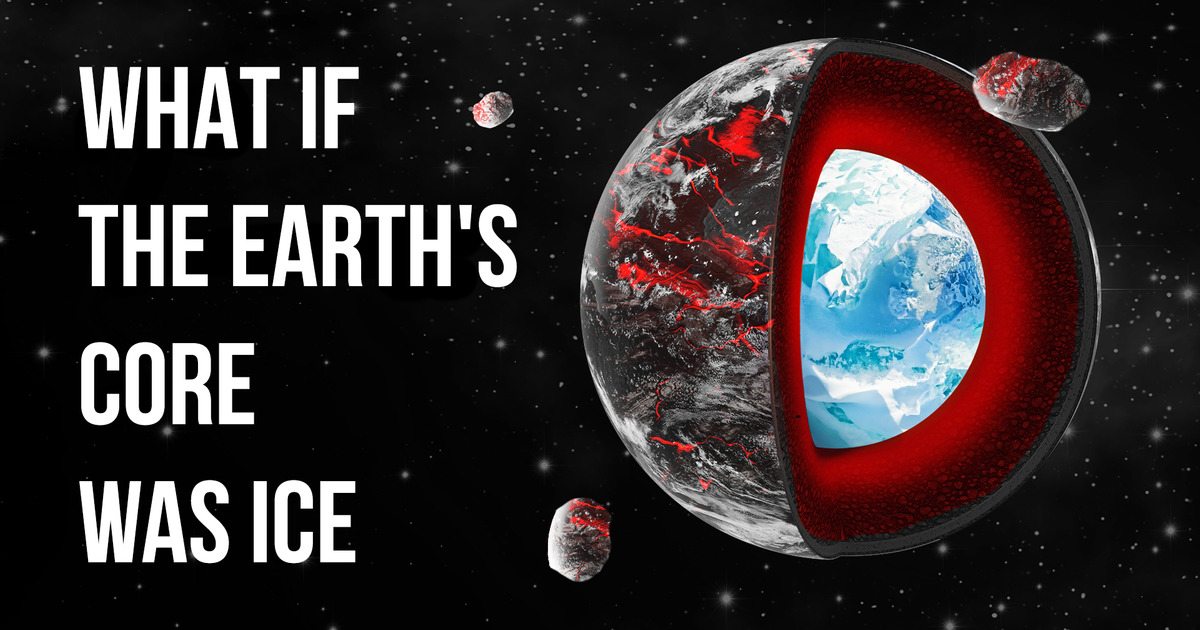
Imagine there’s a huge hot ball hidden inside the Earth. It’s floating in an ocean of molten metal. This ball also spins on its axis, but it moves faster than the rest of our planet. This is what the Earth’s core looks like.
The solid metal ball is the inner core, and it’s 750 miles thick [750 MI (1,200 KM)]. That’s roughly the distance between New York and Chicago, and the whole thing is made up of hot iron and nickel.
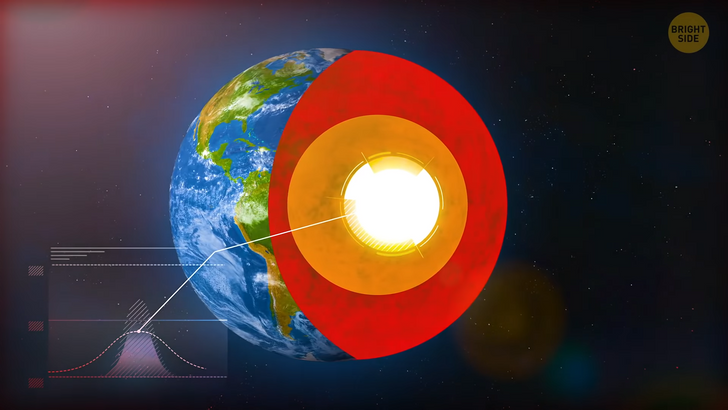
The outer core is the molten ocean. To reach the edge of it, you would need to dig a tunnel into the Earth that was about 3,700 miles long [3,700 MI (5,950 KM)]. But you would hardly want to go there, because it’s the hottest point on the planet. The core temperature is 11,000 degrees Fahrenheit [11,000°F (61,000°C)]. That’s greater than the surface temperature of the Sun!
Another incredible thing about this place: the gravity at the outer core is three times stronger than at the Earth’s surface. This means that if we could somehow find a way to live near the core, and you threw a stone there, it would fall three times faster than normal. It would become three times heavier.
You would also become three times heavier. That doesn’t bother you so much because things far worse will soon happen. Living conditions in the core would be the exact opposite of life on the International Space Station, and it’d be a lot harder than living on the surface.
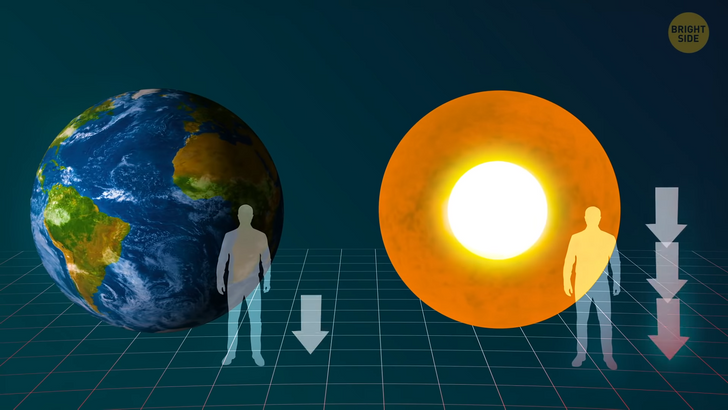
It would be difficult for you to even hold a fork in your hand, because of just how heavy it would feel. Eating lunch would become a serious challenge. You’d break into a sweat just from writing with a pen on paper, or typing on a computer. But if people could ever get used to these conditions, they’d become a lot stronger.
Humans have learned to use the heat coming from inside the Earth as a source of energy. Some companies use this energy to heat water, which creates steam. This steam is used to power turbines that produce electricity. If the core ever cooled down and that heat disappeared, this kind of electricity might become very expensive.
Some parts of Earth might become very dark, as people went back to using candles and fires to light things up at night. And you could forget about using your electric car as well, because charging it up would be just too much money. Phones, computers, the Internet — all these things would cost a lot more. But this would actually be the least of our worries. Oh, just wait for it!
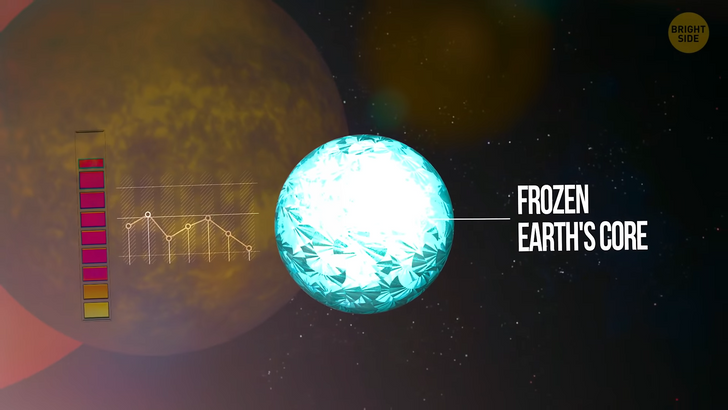
The hot core’s rotation creates the Earth’s magnetic field. This field is like a shield that protects us from the Sun and outer space. If the shield disappears, solar and cosmic radiation would pass through the atmosphere. The electricity supply would become seriously unstable. Microwaves, televisions, kettles, traffic lights, and computers could all be damaged.
The screen of your laptop or phone would turn on and off randomly, videos could freeze, and the batteries could run out in a second. Satellites would stop working, which means there wouldn’t be any GPS system to rely on anymore. Say goodbye to navigating with your phone’s map! Radio equipment would also stop working, so you wouldn’t be able to make calls or send messages.
Even now, when our magnetic field is working normally, solar flares can still create magnetic storms that disrupt electronics and affect people’s health. Some people are sensitive to these storms and can get really bad headaches. If the magnetic field disappeared completely, every person on the planet along with plenty of animals would get seriously painful migraines. Scientists would have to invent special helmets that protect people from exposure to the magnetic storms.
If the core cooled down, and you became lost in a forest, it would be really difficult for you to find your way home even with simple equipment. Without the magnetic field created by the active core, your compass needle would no longer show where North, South, East and West were.
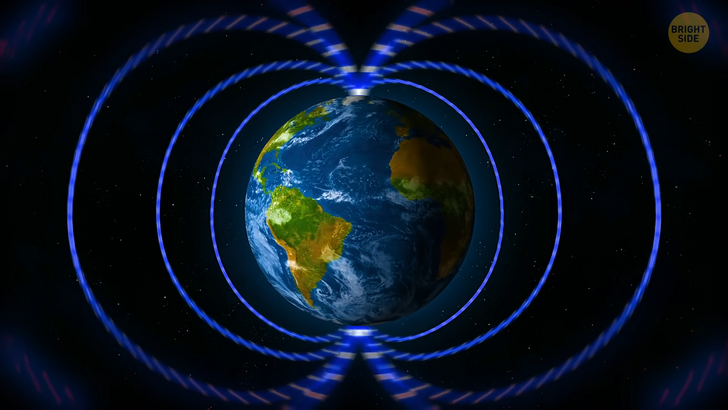
You would see the birds in the sky going crazy. They wouldn’t know what direction to fly in for the winter, because ‘South’ would no longer exist. In fact, no animal would be able to migrate anymore. In the sky, the location devices on planes would stop working. That means no more air travel until people find a new way to navigate.
But hey, let’s look on the Bright Side! Cause that’s what we do here. You wouldn’t have to go to the North Pole to see the Northern Lights anymore. Auroras would appear in the night sky everywhere! These occur because charged solar particles run into the magnetic lines stretching from north to south. But these lines will disappear if the Earth’s core cools down, and the particles will light up the sky all over the world.
A frozen core also means the tectonic plates will stop moving. There will be no more earthquakes anywhere in the world. But that’s not as good as it sounds. The movement of these plates creates faults on the Earth’s surface. They give us access to important minerals.
With no more movement, producing fuel could become a lot harder. The price of gas might go up. Most people would have to stop driving their cars. There would be a lot more bikes and horses on the roads. Maybe some llamas!
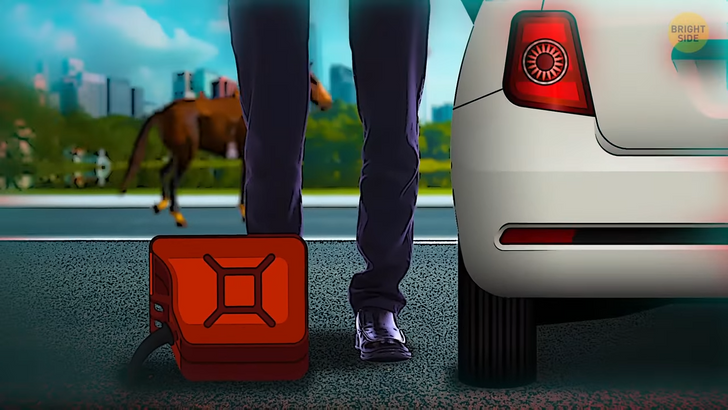
Volcanoes would also stop erupting. If the core cools, the magma cools. People who live near large active volcanoes would no longer need to worry so much. But there would be a downside to this. Volcanoes contain a huge amount of useful substances and minerals. The soil around volcanoes is very fertile, which is really good for agriculture.
So more people would now have to eat artificially created food. There would be big problems with the supply of natural food products. Only rich people might be able to afford that classic tomato and cucumber sandwich.
But the worst thing would be the long-term exposure to radiation, which is seriously bad for our health. More radiation means that the risk of getting diseases would be much higher. People would have to build special shielding to protect themselves from solar radiation. It would be way too expensive to cover the whole planet with this technology, so we’d just create separate shields for each city. Just imagine the sight of every city covered by a huge protective dome!
In this radioactive world, movement between cities would only be possible in special closed transport. People would need to wear protective suits. You wouldn’t be able to go to the countryside anymore. Anyone still living in a village or a small town without much funding would be forced to live underground to protect themselves.
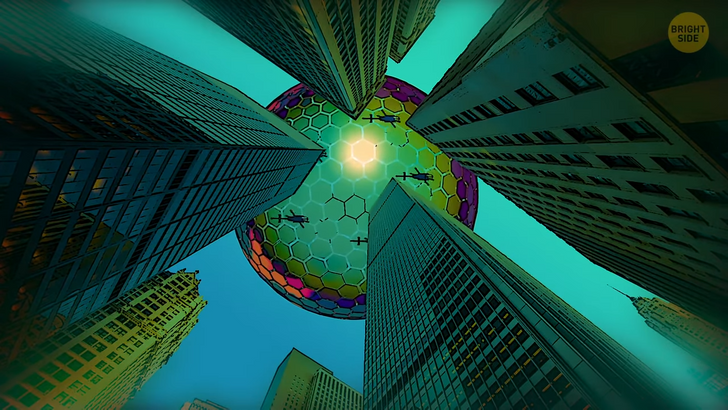
Plants and animals would also have problems. Herbs, flowers and trees would receive large doses of radiation, and wouldn’t be able to bloom. Livestock wouldn’t be able to eat grass and hay. Milk, cheese, and yogurt would be in real short supply. Plants would have trouble producing oxygen.
The magnetic field not only protects us, it protects our atmosphere. A frozen core and no magnetic shield means that the solar wind would destroy the atmosphere in a few hundred years. The conditions on Earth would be changed completely.
Humanity would no longer venture outside its protective domes with their artificial atmosphere. Inside, we’d have not only our cities, but also the last surviving pieces of nature: our trees, lakes, grass, meadows, and flowers. Everything left outside the domes would turn into a scorched desert.
This is what happened to Mars. The Red Planet has no seas, oceans and lakes. Some scientists believe that it’s completely dry because its magnetic field disappeared. With no protection, Mars lost most of its atmosphere and the Sun’s wind swept away all the surface water. But of course, this is just one of many theories. This took place billions of years ago and no one can say exactly what happened.

But don’t worry, our planet won’t turn into Mars any time soon. The Earth’s core is cooling very slowly. It will take another two billion years or so before it cools down completely.
What’s weird though is that our magnetic field can be unstable even today. In the Southern Hemisphere, there’s a spot where the magnetic field is weak. This place is called the South Atlantic Anomaly. Charged solar particles flow through this spot, which can cause problems for orbiting satellites as they pass through.
There are some other places like this around the world. But fortunately, they don’t cause us any really big problems. Good thing.











